Table of Contents
While natural stone has always been a popular building material, due to its high durability and refined aesthetic, it also requires a little bit more due diligence than other materials. It’s well known that natural stone requires more maintenance than other options, but what isn’t common knowledge, however, is that the pre-selection process also requires a handful of considerations that will yield long term benefits.
These considerations should happen prior to ever visiting a slab yard to select natural stone for a project. Then there’s a variety of things worth keeping in mind when visiting a local slab yard. For many first time buyers of natural stone, the process of finding, selecting, and purchasing stone slabs can be overwhelming.
That is why we hope to simplify the process with the following guide for what to know and do when searching for that perfect slab.
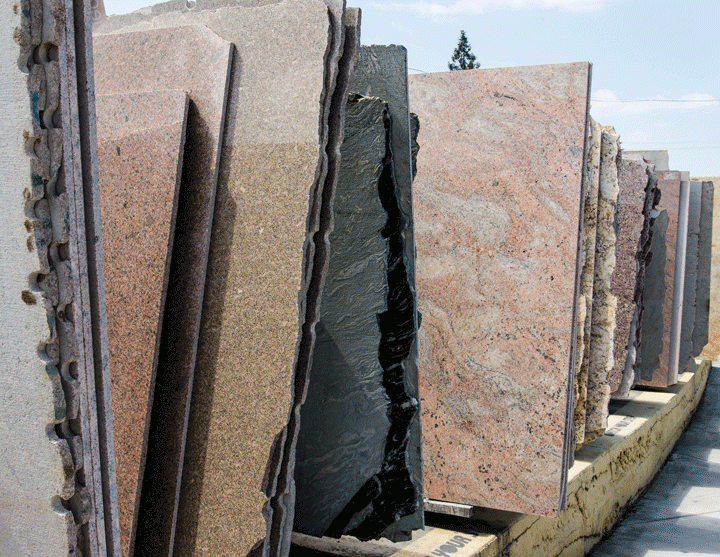
Do Research Ahead of Your Visit
Take full advantage of the 21st century and head online before you ever head to a slab yard. Write down names of different natural stones you like, save photos, and be aware that certain stone names could vary based on the distributor, which is why photos can be helpful.
Use your online research to help narrow down your primary choices based on what a fabricator has online versus what they have on location. Calling ahead to confirm if a certain stone is available or would need to be sourced can save you a surprise headache later.
[get_quote]
Additionally, the more organized you are as a buyer early on in the process, the easier it will be for the stone supplier to help you achieve your overall design vision later. A good option to simplify the majority of the process, is to essentially compile an idea book (think scrap book but with stone options) that you can present to the stone supplier you’re visiting. Boil down your choices and materials to around 5 options if possible, adding in color preference for each material (you’ll likely come out of your visit with more than 5 options anyway).
Certain materials offer up far more or less color and pattern options than others, so figuring that out ahead of time will make it easier to focus on stone products that complement your broader design vision.
Indoor Slab Yards vs. Outdoor Slab Yards
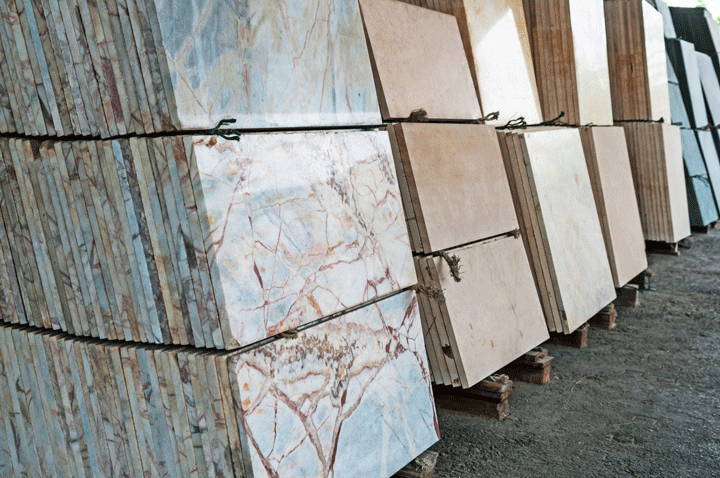
This might seem like an irrelevant or inconsequential consideration. However, lighting is vital to being able to properly assess the quality of natural stone options. Any experienced and established stone supplier will likely have a showroom adjacent to their slab yard, one that has its lighting optimized to better exhibit their stone products. Nevertheless, we’ll break down the considerations to be mindful of whether you find yourself inside shopping for stone or outside.
Indoor Slab Yards
With indoor slab yards, the obvious benefit is that weather or time of day won’t affect whether you can visit. However, indoor lighting can distort the color of the stone, and in all likelihood, a massive warehouse storing stone slabs will most certainly have warehouse lighting. This means lighting that is high above the stone and spaced out. This is why it’s important to get samples of any stone you find compelling and bring it home. By seeing how that particular stone option looks in the lighting of your home, you’ll get a much better idea of whether that stone option is a good fit.
Now if you’re doing a complete remodel, your own lighting situation might change. Again, some basic foresight can help circumvent any issue associated with that, such as bringing the samples with you when you shop for lighting fixtures and other complementary building materials.
Outdoor Slab Yards
Now when it comes to outdoor slab yards, it’s best to visit on an overcast day. This allows for optimal viewing conditions as it relates to natural stone. However, it’s important to avoid going on an overcast day if it had recently rained. Many natural stone options are porous and will absorb water, making the stone look darker than it actually is.
Conversely, a sunny day can wash out many of the naturally occurring patterns and colors. Finding that Goldilocks zone of weather conditions is key to getting the best look possible. Nevertheless, as was the case with indoor slab yards, you’re still going to want to take samples home for the reasons mentioned in the previous section.
Measure, Measure, Measure
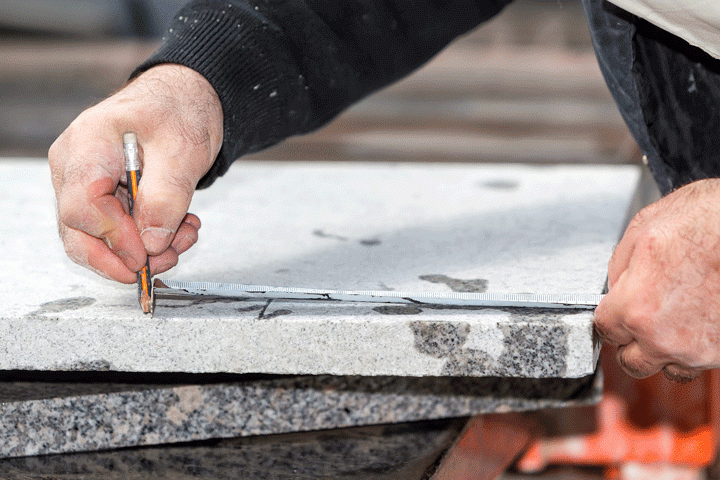
Prior to visiting a slab yard, it would be prudent to get the different measurements of the space you plan to remodel. It might be a good idea to get your cabinets purchased first as those measurements will be more helpful than general measurements of the space, but either way, having pre-measured all of the allotted space will make it significantly easier for the stone fabricator.
Slabs typically are similar in size, around 60in x 120in, but it’s not a golden rule throughout the industry. What you’ll often find at slab yards is a myriad of different sized and shaped slabs. This is why it also important to bring a measuring tape to the slab yard so you can measure any slabs that catch your eye.
Remember, it’s important to account for waste as well. If your project calls for 40 sq. ft of stone, you’re going to need a slab that is a bit bigger than 40 sq. ft. There will be inevitable scraps when your edge profiles are cut in, in addition to any other shaping and prep the fabricator might need to do.
Another reason excess measuring will pay off in the long run is that the more accurate measurements a fabricator has, specifically as it relates to the complete layout of your project, the easier it will be for them to plan for seams. Being able to figure out where seams will be placed will improve the final installation by reducing the visibility of seams.
[get_quote]
You Found the Stone You Like
After a couple visits to multiple slab yards, you finally found a stone you like, and even a particular slab. You’ve listened to what was written above and have acquired a sample of that stone to compare to the other components of your home design. What next?
Put the slab on hold while you sort out the other details. If your project is a month or more away, putting the slab on hold will ensure that specific natural stone slab will be available when you’re ready to begin your project. While most stone suppliers will ask for a deposit for extended holds on material, it is often fully refundable if you change your mind later.
Also, be mindful that certain natural stones like marble or granite are unique on a slab-by-slab basis. Not wanting to request a hold on a slab you feel fits your design scheme could result in you getting a slab that has different veining or patterns than the one that caught your eye initially. That’s why it’s better to be safe than sorry and put a hold on any slab that is a frontrunner for your project.
Inspecting the Slab
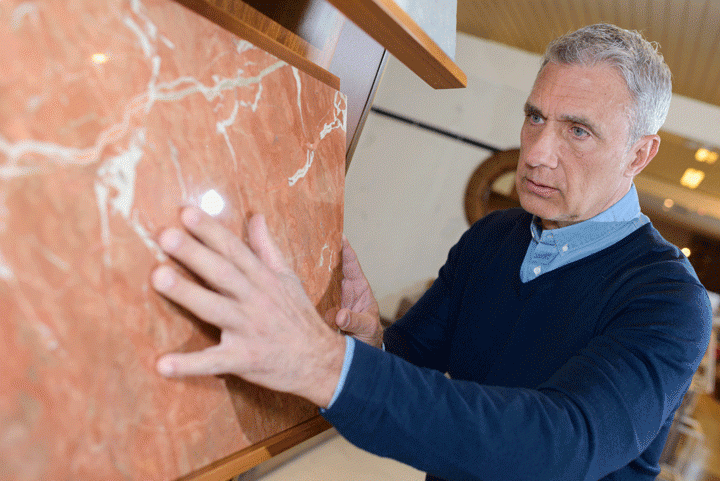
Before finalizing the purchase, the last thing you’re going to want to do is do a detailed inspection of the slab you’ve chosen. The primary reason for this is to ensure there are no cracks in the stone that will impact its overall structural integrity later. The supplier should also be able to help assess the stone, and help you differentiate between a crack and a fissure. Fissures are naturally occurring while cracks are often caused by the stone being mishandled, either on the way to the slab yard from the quarry or at the slab yard.
[get_quote]
Cracks are the biggest issue you have to be on the look out for, as they will at some point compromise the stone. However, dulling, which is more of a superficial problem, is something to avoid if you can. While fabricators will buff the stone, it’s initially polished at the quarry before being shipped to suppliers. If you come across a dull spot on a slab it’s likely due to a lackluster polishing job being done before shipping. Of course, if the slab is too perfect otherwise you could always polish the stone yourself or hire someone to do it.
Hopefully, with these tips and proper preparation your future natural stone projects will be stress-free and time-efficient.













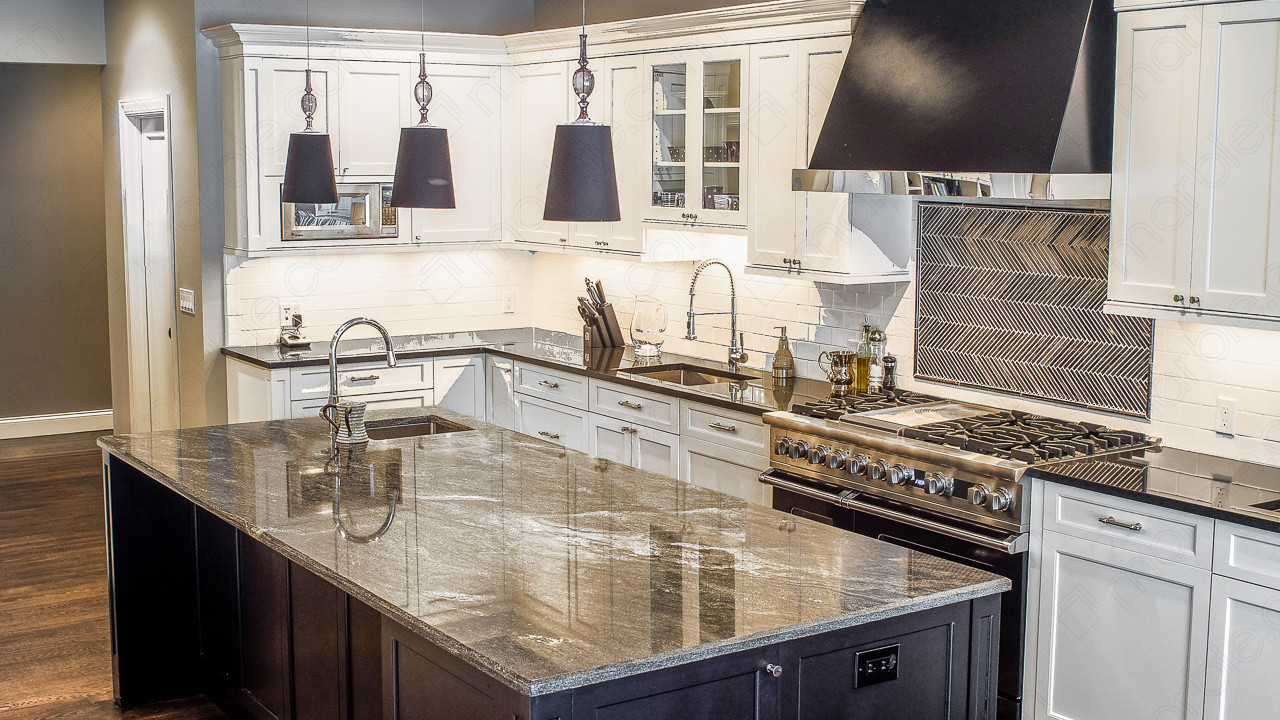
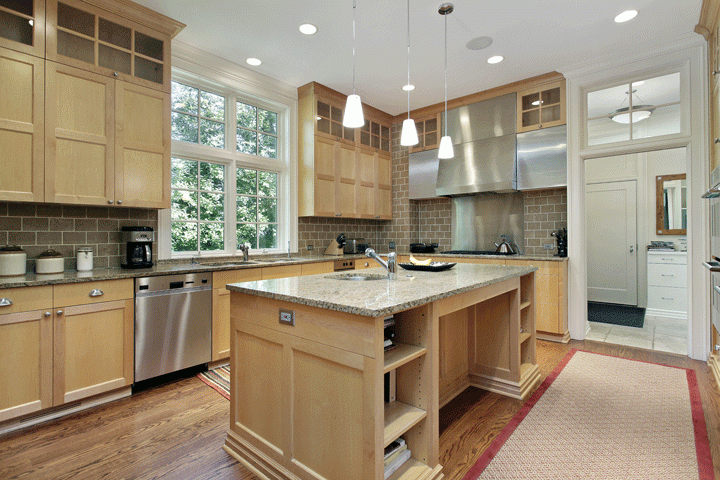
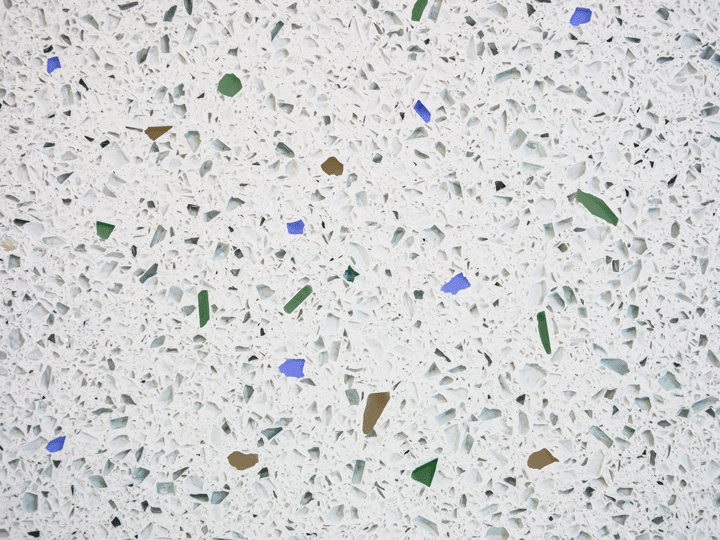
 The article helped me immensely
The article helped me immensely
 I’m now more informed on the subject
I’m now more informed on the subject
 I have questions about Marble.com
I have questions about Marble.com
 The article was not accurate at all
The article was not accurate at all
 There is a serious lack of information
There is a serious lack of information
 I have questions about Marble.com
I have questions about Marble.com